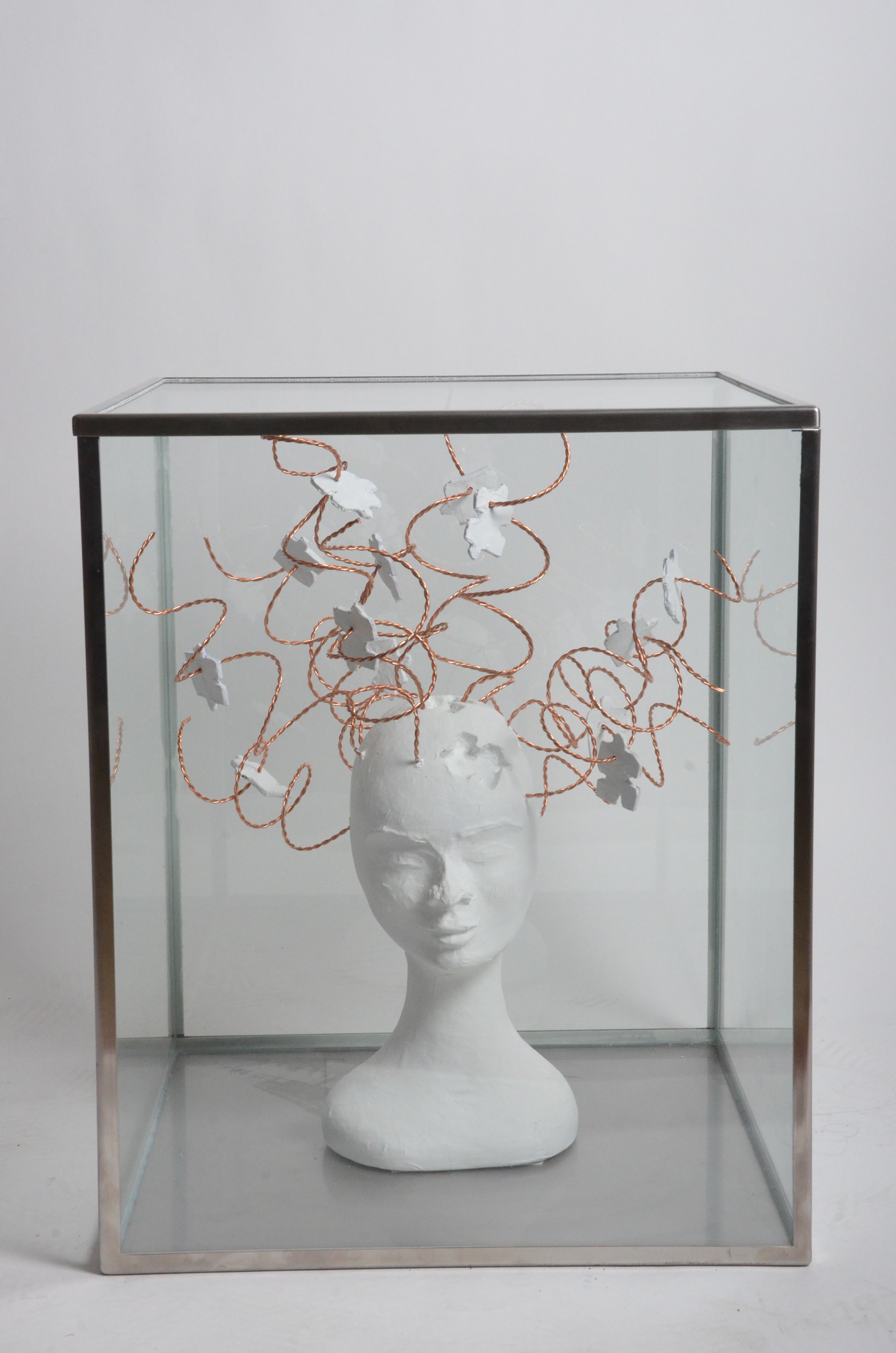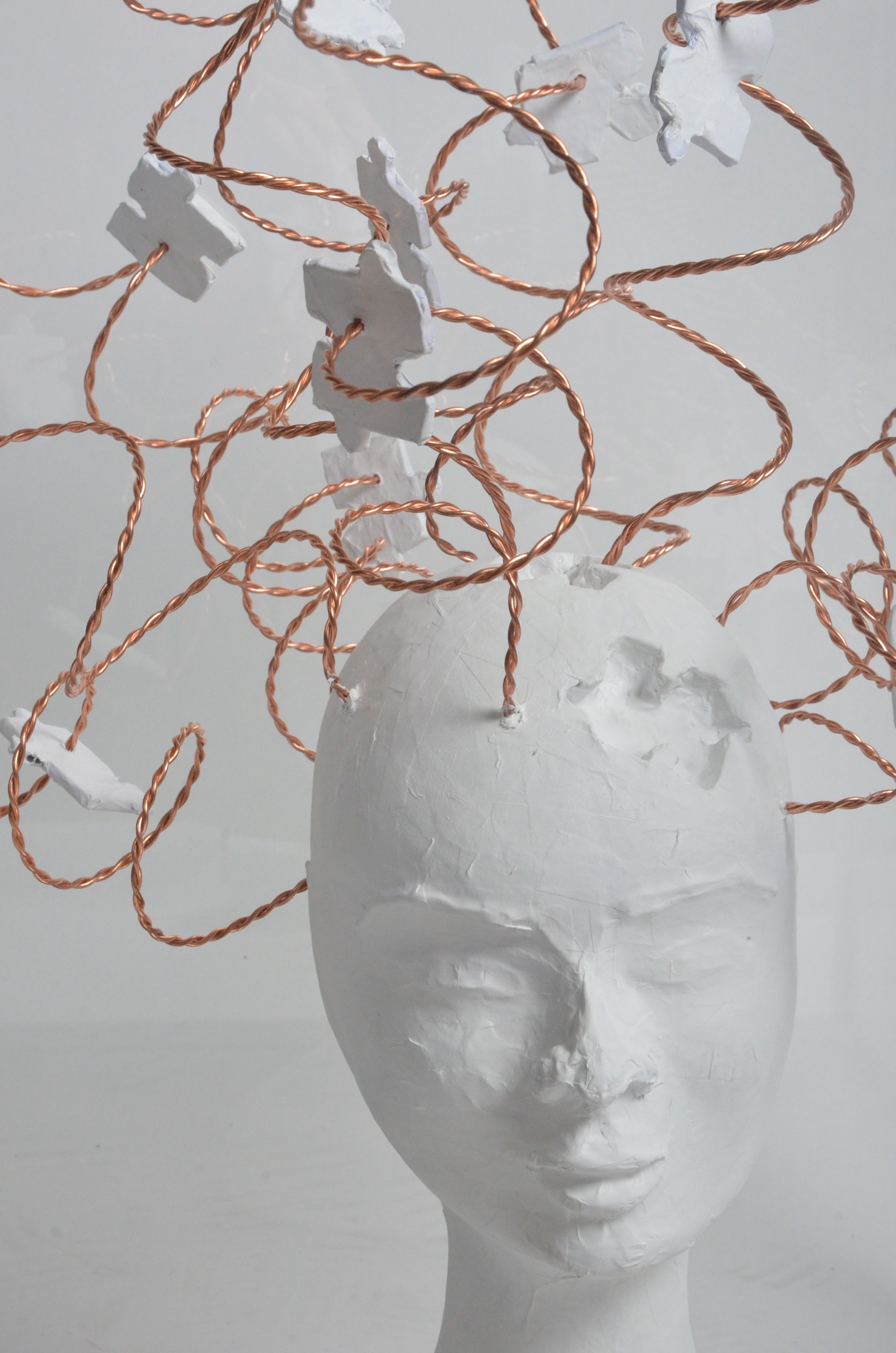These artworks represent the life and struggles of an Autistic person and their inability to engage in social reciprocation. Expressive lines of paint cover the mouth or lack of mouth represent their difficulty to communicate and the displaced puzzle-like pieces represent how an autistic person's connections do not work as they should and there are many pieces that make up their nature.
This artwork is called Unspoken and represents an Autistic person and their inability to engage in social reciprocation. The expressive line of paint covering the mouth represents their difficulty to communicate and the displaced puzzle-like pieces represent how an autistic person's connections do not work as they should and there are many pieces that make up their nature.
This artwork is inspired by artist Davide Cambria. The thick brushstrokes and use of impasto on the shirt are inspired by Vincent Van Gogh and the simplistic nature of the background is inspired by Brian Alfred.
This artwork is inspired by artist Davide Cambria. The thick brushstrokes and use of impasto on the shirt are inspired by Vincent Van Gogh and the simplistic nature of the background is inspired by Brian Alfred.
These two works (above) represent Autism in quite an easy but effective way. These artworks are inspired by artist Kemi Mai and her use of digital painting as part of an extended metaphor. Only some parts are painted in the face symbolising the portraits autistic manner and how they aren't 'fully there'. I have used her use of line to explore the idea of how an autistic person may look normal on the outside and seem fully functioning but only part of the face is dimensional and has life.



This work (above) is a sculptural installation I made in response to my topic of Autism and the affect it has on people. Whilst researching and learning more about Autism I discovered that a puzzle piece was an important symbol that is used for Autism awareness and is frequently associated with the issue. I thought this was an effective shape that I could incorporate back into my work on my panel.
I was originally inspired to use wires coming out of the individual's head when I saw the power cable door open at home and all the thin coloured cables were poking out of the wall. I thought it would be worthwhile to use wires coming out of the head in my installation to represent the wire-like, neuron pathways that are inside a human brain. With Autism and alike other brain illnesses neurons do not communicate with each other as they're designed to and therefore the information needing to be sent around the body to tell it what to do is not working effectively.
The puzzle pieces cut out of the head show that the autistic person may have pieces missing or something not quite right and with the puzzle pieces attached to the wires it shows how these missing pieces may still be there but not necessarily attached as they were supposed to be.